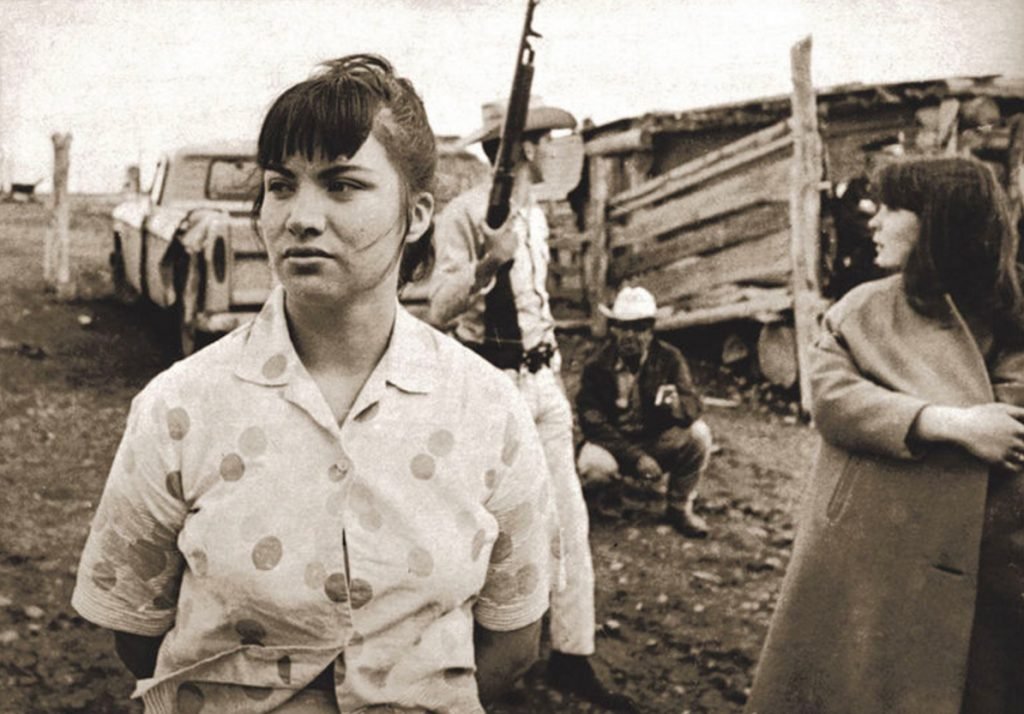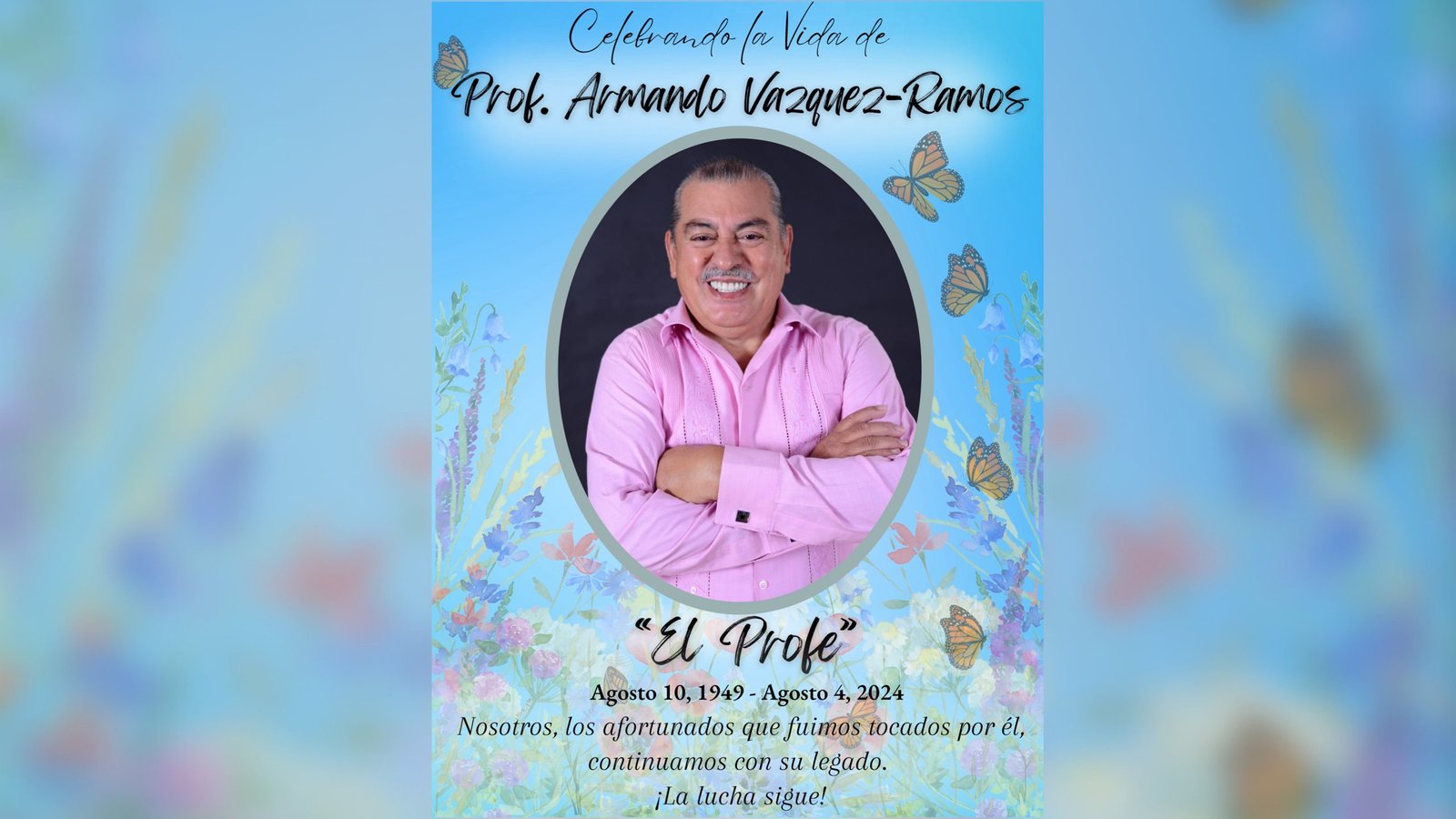By: Molly Boyle, Pasatiempo ~ June 2, 2017
On the afternoon of June 5, 1967, Santa Fe New Mexican city editor Jim Neal received an urgent bulletin on the newsroom teletype machine. Shots had been fired at the Río Arriba County Courthouse. At least one man was wounded, and prisoners were said to be on the loose. As Neal and reporter Peter Nabokov sped 90 miles north to the village of Tierra Amarilla, radio bulletins blared: “One officer injured … Shiprock state policeman … men holed up in court building … may be hostages in basement … started about 3 o’clock.” By day’s end, both a prison guard and a state police officer had been shot. A reporter and a sheriff’s deputy had been taken hostage and spirited away to Canjilon in the deputy’s GTO after their captors sprayed bullets at police cars in the town, and the state police, the National Guard, and the FBI were feverishly searching the mountains for Chicano-rights activist Reies López Tijerina in what became the largest manhunt in New Mexico history.
The nation was riveted by the Wild West-style standoff, as newspaper photographs of Northern New Mexico militants appeared alongside similarly striking images of the Arab-Israeli Six-Day War, which had begun on the same day. A June 6 New York Times headline proclaimed “150 SEIZE TOWN IN LAND DISPUTE: Shoot 2, Take 20 Hostages in New Mexico Battle.” (The group that held the courthouse actually numbered around two dozen.) Despite — or more likely because of — its breathless news coverage, the events of what became known as the TA or Río Arriba Raid, as well as the centuries of Hispanic land-grant tensions that led up to it, have been much misunderstood, though the raid’s significance is indisputable. During 90 minutes of chaos in the courthouse, members of the land-grant rights organization La Alianza Federal de Mercedes, or the Federal Alliance of Land Grants, asserted their fury at government and Anglo usurpation of the nearly 600,000-acre Tierra Amarilla Land Grant. University of New Mexico professor emerita of anthropology Sylvia Rodríguez recently called the incident and its aftermath “a tremendous watershed in New Mexico history from the standpoint of long-term nuevomexicanos.”
In commemoration of the raid’s 50th anniversary, state historian Rick Hendricks and land-grant expert Malcolm Ebright give a talk on Saturday, June 3, at Op.Cit Books. The next day, in a program at the Center for Contemporary Arts called “Remembering La Alianza and the Tierra Amarilla Courthouse Raid,” deputy state historian Rob Martínez and filmmaker Alex Rivera, who is working on a feature film on the raid, discuss the legacy of the courthouse battle. Other panelists scheduled to appear on June 4 include Larry Calloway, the United Press International reporter who was taken hostage by La Alianza at the courthouse, as well as UNM associate professor of American studies David Correia, who has explored La Alianza’s place among the civil rights movement and as a target of the FBI, which surveilled and infiltrated the group as part of J. Edgar Hoover’s anti-activist Cointelpro program.
Rob Martínez is the son of musician Roberto Martínez, who wrote the indelible “El Corrido de Río Arriba” about the raid. “The biggest misconception about the raid is that Tijerina ran in there, guns blazing. He wasn’t even there,” Martínez said. Like many details surrounding the incident, whether Tijerina was present at the courthouse remains a matter of dispute. Calloway, who dictated his story over the phone to UPI the moment he was released on the day of the raid, maintains that Tijerina showed up. “His legal defense at first was that he was not there. I had to testify that he was there. His daughter Rose said that he was there, and she was certainly there,” Calloway said. He has accepted the slippage involved in the facts of the case. “It’s been 50 years. There are a lot of errors of memory as well as bad reporting. There were a lot of stories that had my byline on them that I did not write.” Martínez said, “It made national news because it was very sensational, and there’s an exotic quality to New Mexico. It’s almost like a foreign country in the United States. … People were like, ‘What do you mean, land grants? Going back to the 1600s?’ ”
“The whole issue of land loss after American incorporation is this deep bone infection in the body politic of Hispanic New Mexico,” Rodríguez said. “Periodically some kind of national or regional event triggers that deep, deep feeling, and Tijerina did that.” Heirs of the original Tierra Amarilla grant had been fighting to restore ownership of the land in the courts for years prior to the raid. Tijerina, an itinerant Pentecostal preacher who fled Arizona after legal issues resulting in part from the commune he had established there, began researching land-grant rights in earnest after seeking refuge in New Mexico. The most significant milestone in the complex history of land grants in the state came with the 1848 signing of the Treaty of Guadalupe Hidalgo, when Congress guaranteed that residents of Mexico would retain land rights after the U.S. took over the New Mexico Territory. Tijerina officially incorporated La Alianza Federal de Mercedes in Albuquerque in 1963, the 115th anniversary of the signing of the treaty.
Conflicts over rights to land and water are a staple of New Mexico history. As Frank Waters writes in the introduction to Ebright’s The Tierra Amarilla Grant: A History of Chicanery, “Millions of acres in the 276 other Spanish and Mexican land grants in New Mexico have been similarly stolen from their grantees and their descendants since the United States assumed sovereignty over the territory in 1848.” Ebright traces the appropriation of the Tierra Amarilla land to Thomas Catron, the most notorious member of the Santa Fe Ring and “the largest landowner in the United States, in his day,” who began buying the interests of the Martínez family to the TA grant in 1874. Catron is said to have paid about $200,000 for 42 deeds, though many others besides the Martínez family claimed ownership of the grant.
After more than a century of land-grant injustices, and fueled by the activism of the Chicano, civil rights, and anti-war movements, “Tijerina was at the right place at the right time,” Martínez said. “If he hadn’t been born, someone would have had to invent him. If you look at Martin Luther King Jr., and what Cesar Chavez was doing at the time, he got into the fray. The land grant issue gave him a new lease on life, a reason to live.”
According to Hendricks and Ebright, Myra Ellen Jenkins, who served as state historian from 1967 through 1980, was a fierce opponent of Tijerina’s and La Alianza’s cause. Jenkins’ lack of support for the land-grant descendants’ rights, as well as the increasingly militant tactics of La Alianza — who in October 1966 took armed possession of a campground in Kit Carson National Forest before authorities disbanded them — helped sway other prominent viewpoints within the state government at the time. Among those who were frustrated by La Alianza’s belligerence was district attorney Alfonso G. Sanchez, who thought Gov. David Cargo was too soft on the group. Days before the raid, wary of the organization’s tactics, Sanchez had broken up a meeting of the group and arrested several of its members. Following those events, La Alianza headed to Tierra Amarilla on June 5 in order to place Sanchez under citizen’s arrest and free their comrades, who had been released by a judge at their bond hearing shortly before the uprising. Not finding Sanchez at the courthouse (he was in Santa Fe, mobilizing forces in Río Arriba County after hearing rumors of La Alianza’s plans), the group’s frustrations erupted into the melee that made history.
Following the ensuing manhunt and media frenzy, Tijerina became a folk hero, known as King Tiger thanks to the press’ crude translation of his name. “El Corrido de Río Arriba” received heavy radio play. Authorities captured the leader near Bernalillo on the Saturday after the raid. He was charged with 54 criminal counts, including kidnapping and armed assault. The matter of whether Tijerina surrendered or was caught is still in contention. Calloway said, “I think he allowed himself to be captured because the cops found him in the backseat of a car at a gas station. Maybe a friend called and said, ‘I have him.’ He was very much wanted, so he couldn’t just appear without the possibility of being shot. I think that he wanted to give himself up.”
Tijerina served two years for charges related to the raid. “Like all controversial figures, he was loved by many and hated by many,” Martínez said. Tijerina, who died in 2015, has been both denigrated as an opportunistic, mentally ill agitator and venerated as an integral civil rights leader. In the early ’70s, Jenkins sent the governor a letter changing her position to defend the activist, writing that “further imprisonment would not serve the cause of justice,” while Alfonso Sanchez, in a 2013 interview with The New Mexican, admitted “a grudging respect for Tijerina’s ‘inquisitive’ mind.” King Tiger’s most remembered quote is a rather tempered statement — “I am not for separatism from the United States. My motto is justice but not independence from or revolution against the United States,” — though in his later years, he increasingly and vehemently blamed Jews in New Mexico for their appropriation of Spanish land grants.
The legacy of the TA Raid is much less convoluted than that of Tijerina himself, according to Ebright. “The enduring part of the courthouse raid is that land and water have been in the courts,” he said. “It’s educated people on a grassroots level, who are becoming much more sophisticated about their history than in other places.” Pointing to the conflicts that continue over land and water in the state, Martínez echoed these sentiments. “The raid caused a reawakening of the importance of land — the importance of having a culture rooted in land, language, religion, and a government that represents you and doesn’t oppress you and steal from you,” he said. “It was part of a bigger thing that was going on. It hit the national psyche. Revolution means going to what’s at the bottom and tossing it to the top and mixing things up. The courthouse raid did that.”
Resource: Pasatiempo





